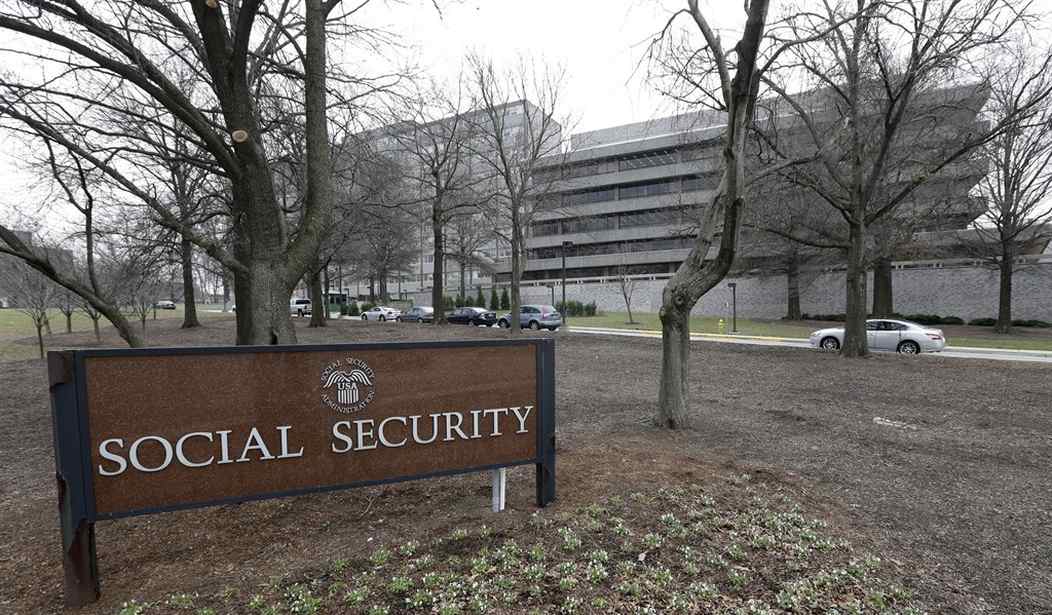The United States is at a crossroads. You may have heard that Social Security is politically impossible to reform. But that belief will be hard to sustain. In a few years, the Social Security Trust Fund will be exhausted. When that happens, Social Security benefits will be cut across the board by 21% -- that is, unless Congress changes the law. Either way, changes are coming.
The question that remains is which change we will go for. That choice will have long-lasting consequences.
But first, let's review how we got where we are. Social Security is facing a permanent cash-flow deficit that started in 2010. Every year since, the payroll tax revenue has not been enough to cover all the benefits paid to current retirees. To make up this difference, the program has been relying on trust-fund assets that once accumulated as a surplus.
Between the Social Security reform of the 1980s and 2010, the payroll tax collected more revenue than necessary to pay for benefits. That extra revenue, the surplus mentioned above, was handed out to the Department of Treasury to pay for bridges, wars and other things in exchange for IOUs, or a legal promise to repay Social Security when payroll tax revenue no longer covers all the program costs.
In 2033, there will be no more trust-fund assets left for the program to use. At that time, Social Security benefits must, by law, revert to being paid only with revenue earmarked for Social Security. That means current payroll taxes and other dedicated revenue sources like the tax on Social Security benefits.
Now that we understand why benefits will get cut, let's look at the options we have.
Democrats would like to keep all the benefits and raise taxes on higher-income people quite dramatically. This is a ridiculous idea. The damage caused by jacking up the payroll tax to the level required to restore solvency isn't worth the benefit.
Recommended
There is an alternative that makes far more sense. Today, seniors are generally wealthier than younger workers and are overrepresented in the top income quintile. Keeping every dime of your Social Security whether you are rich or poor means the program effectively redistributes money from younger and poorer people to richer people. That's not right. We should have a system that redistributes money only to those who need it the most.
Enter Andrew Biggs and Kristin Shapiro. In their new paper, "A Simple Plan to Address Social Security Insolvency," they note that if the scheduled 21% cut is implemented on "an equal percentage basis for every retiree," it would "double the elderly poverty rate and reduce total income for the median senior household by 14 percent."
Instead, they suggest that when a program becomes insolvent, "the executive branch in fact possesses considerable discretion to allocate those limited funds in a reasonable manner." The idea is that the president at the time of the trust-fund exhaustion would pay full Social Security benefits to those in greatest need first.
Specifically, starting in 2033, if Congress hasn't reformed Social Security, cap monthly benefits to $2,050. That would cover full benefits for about 50% percent of retirees, arguably those who depend the most on Social Security. The benefits for the other half of retirees, the higher-income ones, would be distributed on a progressive basis. The higher one's income, the larger the necessary cut would be.
I understand that voters, seniors, politicians and just about everyone else would prefer those benefits not be cut at all. This is not happening. Maintaining all the benefits and paying for the gap with borrowed funds requires $40 trillion over 30 years. If you add the $75 trillion shortfall for Medicare, this option exposes us to dramatic consequences like inflation.
The bottom line is that Social Security is getting reformed no matter what politicians are telling us. The program, which was designed at a time when not working was almost synonymous with poverty for seniors, needs to be updated for the 21st century. And, while benefits need to be cut one way or another, it can be done relatively fairly.
We should all be grateful that capital markets and the stability of American institutions make so many seniors so well off and so well prepared for retirement today. The way forward is to take care of those seniors who truly need help, using the tax revenue we are already raising. There are no better and more politically feasible ideas on the table.























Join the conversation as a VIP Member